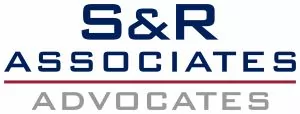CLEAN ENERGY
CENTRAL GOVERNMENT
MoP Issues Notification to Amend the Electricity Rules
Pursuant to a notification dated January 10, 2024, the Ministry of Power ("MoP") issued the Electricity (Amendment) Rules, 2024 to amend the Electricity Rules, 2005 (the "Electricity Rules," and such amendment, the "First Amendment").
The First Amendment allows certain specified entities (such entities, the "Exempted Entities") to establish, operate or maintain a dedicated transmission line to connect to the grid without being required to obtain a license for this purpose under the Electricity Act, 2003 (the "Electricity Act"). Such Exempted Entities are as follows:
- generating companies ("gencos");
- persons setting up a captive generating plant ("CGP") or an energy storage system ("ESS"); and
- consumers having a load of not less than 25 megawatt ("MW") (in case of interstate transmission system) and 10 MW (in case of intrastate transmission system), respectively.
However, the Exempted Entities will still need to comply with the regulations, technical standards, guidelines and procedures, as issued under various provisions of the Electricity Act, for the purpose of enjoying the benefit of such license exemption with respect to establishing, operating or maintaining a dedicated transmission line to connect to the grid.
Further, the First Amendment has capped various open access charges, including in respect of charges related to:
- wheeling (for which a formula has been specified with regard to computation that involves the annual revenue requirement ("ARR") towards wheeling);
- using the network of state transmission utilities (with respect to availing short-term open access or temporary General Network Access ("GNA"), where such charges cannot be more than 110% of the charges levied on consumers that use such network on a long-term or GNA basis); and
- additional surcharge (where the surcharge levied on any open access consumer cannot be more than the per unit fixed cost of power purchase of the concerned distribution licensee, subject to certain qualifications).
In addition, to make the tariff more reflective of the costs involved, a new rule 23 has been added to the Electricity Rules which mandates that there should not be any gap between (i) the approved ARR, and (ii) the estimated annual revenue from the approved tariff, except under conditions of natural calamity and subject to certain specified qualifications.
Background and Context
Last year, pursuant to a notification dated June 28, 2023, the MoP had issued the Draft Electricity (Amendment) Rules, 2023 for the purpose of seeking comments to certain proposed reforms. Such reforms stemmed from concerns raised by various stakeholders. Specifically, a request had been received to allow large consumers with a specified quantum of load (such as, manufacturers of green hydrogen) and ESS to establish, operate or maintain dedicated transmission lines without the requirement of a license (similar to the allowance provided to gencos and captive generators through an order dated June 8, 2005).
Further, stakeholders had also raised the issue of prohibitively high open access charges across different states. Accordingly, rationalization of such charges had been sought through a new rule that prescribed the methodology of computation.
Analysis
Delicensing:
Under the provisions of the Electricity Act, every person that undertakes power transmission through a dedicated transmission line is required to obtain a license from the applicable state government, along with approvals related to 'right of way'. Such regulatory requirement applied to gencos (including those producing power in CGPs) when they used dedicated lines to transmit power from the points of generation to consumption, respectively.
The removal of this mandatory license requirement for establishing, operating or maintaining a dedicated transmission line to connect to the grid may lead the Exempted Entities to develop their own dedicated transmission lines.
Such potential rise in transmission capacity may improve the stability of the national grid on account of the resultant reduced burden. Further, bulk power consumers may potentially shift to standalone transmission systems in the future.
In addition, by including ESS within the scope of a new delicensed regime, the First Amendment provides an opportunity for dedicated energy storage providers (i.e., those which are not involved with power generation or distribution at present) to design and offer bespoke services related to both electricity transmission and storage.
Limiting, regulating, and simplifying the calculation of, open access charges:
Earlier, power consumers were bound to purchase electricity from state-owned electricity distribution companies ("discoms"). Accordingly, discoms had a monopoly over electricity distribution as well as retail in their respective jurisdictions. In turn, discoms were required to (i) source power from various sources (gencos or the open market), and then (ii) supply such power at regulated tariffs to their respective customers.
For the purpose of promoting competition and to increase efficiency in the power sector, the Electricity Act had introduced significant changes to the manner in which electricity was generated, transmitted and distributed in the country. For instance, the Electricity Act mandates transmission utilities at both the central and state levels, as well as discoms at the state level, to provide non-discriminatory open access to their network upon the payment of certain specified charges ("open access charges"). Thus, the owner of a grid network (i.e., wired channels for the transmission and supply of electricity) is obligated to allow other entities (that are involved in the power business) to use its channel upon the payment of open access charges (e.g., with respect to cross-subsidy).
Importantly, the Electricity Act allows for open access in the context of both transmission and distribution of power. In case of transmission, for example, transmission licensees are required to provide other licensees (including traders and discoms) and gencos, respectively, non-discriminatory open access to its own transmission network.
Open access can be further classified into inter- and intra-state open access. Inter-state open access is governed by regulations framed by the Central Electricity Regulatory Commission ("CERC"), where the purchasing and selling entities, respectively, operate in different states. Intra-state open access is governed by regulations framed by the appropriate state electricity regulatory commission ("SERC"), where the purchasing and selling entities, respectively, operate within the same state. Based on tenor, both inter- and intra-state open access may be further classified into short, medium and long term, respectively.
In effect, the open access mechanism provides power consumers the option to choose their supplier of electricity, and thus, allows consumers with a minimum contracted demand/sanctioned load to buy energy directly from gencos instead of purchasing from discoms. However, in return for providing non-discriminatory access through the use of their transmission lines or distribution systems (including the facilities associated with such lines or systems), corresponding transmission and distribution licensees impose certain charges on users. For instance, discoms levy open access charges on consumers that purchase electricity from any other source.
The Electricity Act specifies the roles and responsibilities of SERCs with respect to introducing open access in their respective states in a phased manner, including in connection with determining the applicable charges to be levied on consumers that opt for open access for utilizing the applicable power distribution network.
Accordingly, open access charges vary from state to state. Key components of open access charges include those relating to central and state transmission (such as the fees paid by a consumer or generator to a central ("CTU") or state transmission utility ("STU"), respectively, for the use of its transmission system and related facilities to transport electricity), as well as the transmission losses (i.e., apportioned energy losses in either the central or state transmission systems, respectively) which need to be absorbed by consumers and generators based on the CERC's specification.
Further, open access charges also include those related to wheeling or distribution paid to discoms, as well as wheeling/distribution losses – i.e., the technical losses with respect to a distribution system, as determined by SERCs for various voltage levels in a given year. During transmission through grid networks, discoms encounter a major loss of electricity.
In general, wheeling or distribution charges refer to the fees payable by a consumer or genco to a discom for using the latter's infrastructure (i.e., its distribution system and associated facilities) for the purpose of transporting electricity from a power plant to end-users. Since these charges are calculated by state discoms pursuant to the methodology prescribed by SERCs, wheeling or distribution charges vary across states. Accordingly, in order to make such charges uniform across states, and with the aim of further incentivizing power procurement via open access, the First Amendment specifies a formula for the calculation of wheeling charges.
In addition, cross-subsidy and additional surcharge are also included within open access charges. Most open access consumers which buy at cross-subsidized or higher rates are commercial and industrial ("C&I") entities purchasing power in bulk from other sources. This leads to a loss for the discom of the area which owns the network, in the sense that such discoms end up losing out on high-paying clients.
In order to help discoms provide electricity to certain categories of consumers (e.g., financially weaker sections) at subsidized rates – which deficit could be balanced by providing electricity at comparatively higher rates to C&I and other high-paying consumers, the cross-subsidy surcharge ("CSS") is a fee payable to discoms to help the latter meet the requirements of the current level of cross-subsidy within their area of supply. Essentially, the CSS is a compensatory payment made to discoms for the purpose of enabling them to recover the loss of the element of cross-subsidy (which is built into the tariff of certain consumers) on account of power procurement by C&I and other high-paying consumers through alternative sources of supply under open access.
Similarly, the additional surcharge is included under open access charges for the purpose of compensating discoms for the fixed costs of developing and maintaining their distribution systems, where such costs arise from their statutory obligation to supply electricity in cases where consumers are permitted to access the open access route. The Electricity Act requires discoms to supply power on demand to consumers. In the event that a consumer wishes to purchase electricity from an entity other than the discom of that area, such discom nevertheless remains obliged to supply that power to such consumer on demand. Thus, the additional surcharge is designed to cover the fixed costs incurred by discoms stemming from their statutory commitment under the Electricity Act to supply power on demand in an effort to balance (i) a customer's right to obtain power from a source of their choice with (ii) the financial interests and operational viability of discoms.
Further, the majority of power procurement by discoms is long-term in nature. Discoms typically have long-term arrangements or power purchase agreements ("PPAs") with gencos based on their sales forecasts. Accordingly, discoms pay a fixed/capacity charge and variable/energy charge to such gencos. Once an open access consumer shifts to an alternative source of supply, these fixed charges are still applicable to be paid by discoms to gencos. Accordingly, for the purpose of preventing an under-recovery of the fixed expenditure incurred by discoms for long-term power procurement in situations where consumers procure power through alternative sources of supply under open access, the additional surcharge needs to be calculated appropriately to recover stranded costs on account of stranded PPAs and stranded assets.
The First Amendment requires the additional surcharge levied on any open access consumer to not be more than the per unit fixed cost of power purchase of the concerned discom. However, additional qualifications to which such requirement remains subject specify that the additional surcharge (i) will not be applicable for open access consumers to the extent that their contract demand with the appropriate discom is maintained; and (ii) will be applicable only for such open access consumers which are, or have been, consumers of the concerned discom.
Further, for a person availing GAN or open access, the additional surcharge is required to be linearly reduced from the value corresponding to the year in which GAN or open access was granted, such that it gets eliminated within four years from the date of that grant – if such person continues to avail of GAN or open access.
Other open access charges also include charges related to state load dispatch centers ("SLDCs"), standby, banking, scheduling and deviation settlement, among others. SLDC charges includes a composite of operating charges (typically levied on a daily basis) and a one-time application fee. Banking charges are levied by discoms (usually as a percentage of the energy generated) to allow power plants to bank a portion of such generated energy which is not required by their open access consumer (i.e., storing such surplus energy for subsequent withdrawal, as and when needed).
Standby arrangements could be required by open access consumers to tide over electricity deficits in extraordinary situations, such as when power outages are suffered by gencos and/or transmission assets. In such situations, an open access consumer may be forced to procure power from an alternative source (e.g., a discom). However, the leviable charges for maintaining such standby arrangements need to account for the costs incurred by discoms for providing such support services on sudden demand. While standby charges for long-term open access consumers often stem from contractual arrangements with discoms, those for short-term open access are generally defined by SERCs from time to time.
To read this article in full, please click here.
This insight/article is intended only as a general discussion of issues and is not intended for any solicitation of work. It should not be regarded as legal advice and no legal or business decision should be based on its content.
We operate a free-to-view policy, asking only that you register in order to read all of our content. Please login or register to view the rest of this article.




